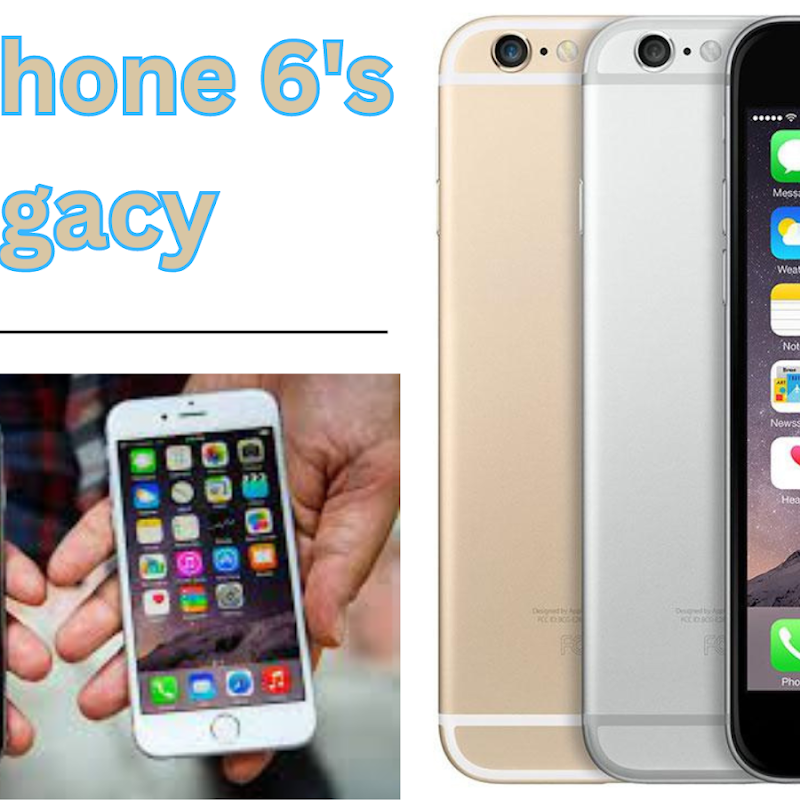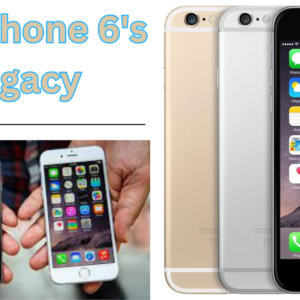iPhone 6 | A Pinnacle of Design and Innovation
Introduction
The iPhone has been at the forefront of technological innovation and design in the smartphone industry since its inception. Each iteration brings new features and improvements, shaping the way we interact with our mobile devices. In 2014, Apple unveiled the iPhone 6, a device that represented a significant step forward in both design and functionality. In this article, we will delve into the iPhone 6, discussing its design, display, performance, camera capabilities, software, and the impact it had on the smartphone industry.
Design: A New Era of Elegance
The iPhone 6 marked a departure from the squared-off design of the iPhone 5 and 5s. It embraced a more curvaceous, sleek, and seamless design:
A. Slimmer and Lighter: The iPhone 6 was thinner and lighter than its predecessors, measuring just 6.9mm thick and weighing 129 grams, making it a pleasure to hold and use.
B. Curved Edges: The rounded edges and curved glass made the device comfortable to grip, and the design was a departure from the flat, angular look of previous models.
C. Larger Screen Sizes: The iPhone 6 came in two variants, the 4.7-inch iPhone 6 and the 5.5-inch iPhone 6 Plus, offering users a choice in screen size for the first time. The larger screen sizes were a response to the growing popularity of phablets.
D. Metal Unibody: The aluminum unibody design not only added to the premium feel but also contributed to the structural integrity of the device.
Display: Retina HD with Improved Resolution
The iPhone 6 featured a Retina HD display, which offered several improvements over its predecessors:
A. Higher Resolution: The 4.7-inch iPhone 6 had a resolution of 750 x 1334 pixels, while the larger 5.5-inch iPhone 6 Plus had a full HD resolution of 1080 x 1920 pixels. This marked a substantial improvement in screen clarity.
B. Enhanced Color Accuracy: The display on the iPhone 6 featured better color accuracy and saturation, resulting in more vibrant and lifelike visuals.
C. Wider Viewing Angles: The display had improved viewing angles, ensuring that the screen’s content remained clear and vibrant even when viewed from different angles.
Performance: A8 Chip
The iPhone 6 was powered by the A8 chip, which was a significant improvement over the previous A7 chip in the iPhone 5s:
A. Faster Processing: The A8 chip featured a 64-bit architecture and improved CPU and GPU performance, making the iPhone 6 noticeably faster than its predecessor.
B. Energy Efficiency: The A8 chip was not only more powerful but also more energy-efficient, leading to better battery life and performance.
C. M8 Motion Coprocessor: The iPhone 6 introduced the M8 motion coprocessor, which was designed to track motion and health-related data more accurately, supporting features like the Health app.
Camera Capabilities: A Focus on Photography
The iPhone 6 featured improvements in its camera system, offering users a better photography experience:
A. 8-Megapixel Rear Camera: While the megapixel count remained the same as the iPhone 5s, the iPhone 6’s camera featured improved sensor technology for better low-light performance and overall image quality.
B. Optical Image Stabilization (OIS): The iPhone 6 Plus included optical image stabilization, which reduced motion blur in photos and allowed for smoother video recording.
C. Faster Autofocus: The camera boasted faster autofocus and better face detection, ensuring that users could capture their moments quickly and accurately.
D. Improved Video Recording: The iPhone 6 could record 1080p video at 60 frames per second, offering enhanced video quality and smoothness.
E. Front Camera: The front-facing camera was also upgraded to a 1.2-megapixel sensor with better face detection and improved low-light performance, making it great for selfies and video calls.
iOS 8: Software Enhancements
The iPhone 6 was shipped with iOS 8, which introduced several new features and improvements:
A. Widgets: iOS 8 allowed developers to create widgets for the Notification Center, enhancing the user’s ability to access information and shortcuts.
B. Health App: The Health app was introduced to track various health and fitness data, laying the groundwork for Apple’s health and fitness initiatives.
C. Third-Party Keyboards: iOS 8 introduced support for third-party keyboards, offering users more customization and typing options.
D. Continuity: With Continuity, users could seamlessly switch between their iOS devices and Mac computers, providing a more integrated experience.
Connectivity: Faster Wireless and NFC
The iPhone 6 introduced faster 4G LTE connectivity, ensuring users enjoyed better data speeds. Additionally, the device incorporated Near Field Communication (NFC), which paved the way for Apple Pay, the company’s mobile payment system.
Battery Life
The iPhone 6 offered improved battery life compared to its predecessors. The energy-efficient A8 chip and the larger battery ensured users could go through a full day of use without needing to recharge.
Impact on the Smartphone Industry
The iPhone 6’s larger screen sizes, curved design, and improved performance set new standards in the smartphone industry. It played a pivotal role in the trend towards larger displays, with many manufacturers subsequently adopting the phablet form factor. The iPhone 6 also popularized mobile payments through Apple Pay, leading to the widespread adoption of contactless payment systems across the industry.
Conclusion
The iPhone 6 was a landmark release in Apple’s history, representing a convergence of design, performance, and innovation. Its larger and more vibrant display, sleek design, improved camera capabilities, and faster performance set it apart as a significant step forward in the evolution of smartphones. As the smartphone landscape continues to evolve, the iPhone 6 remains a classic device that exemplifies Apple’s commitment to pushing the boundaries of technology and design. It played a crucial role in shaping the future of smartphones, leaving an indelible mark on the industry.

